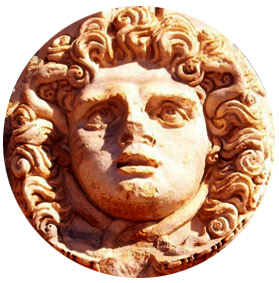The Massacre of the Berber Guanches of the Canaries
The Massacre of the Berber Guanches of the Canaries:
The indigenous Guanche inhabitants of the Canary Islands (west of Morocco, in the Atlantic Ocean) were also Berbers right down to the 16th century, just before they were condemned to oblivion by barbarians from medieval Europe.
Probably the most disastrous event in Berber history in relation to European conquests is the terrible massacre of the Guanche tribes of the Canaries. Unimaginable catastrophe; effected in the name of piracy.
They were completely isolated from the outside world, living in peace and tranquility, and reportedly had no contact with the outside world until Spanish conquerors broke-in to embark on their systematic genocide – a brutal job that took nearly 90 years of savage slaughter to complete.
Still worse, those 'Berbers' who hid in the sacred caves of the mountains were slowly hunted to extinction like poor animals; while the captured survivors were sold as “first-class slaves" in Europe's aristocratic markets.
Without learning much about them, or about their painful tragedy, the Guanches were forced not-only to give up their beloved pride, and see their women & children slaughtered before their eyes, but also were forced to vanish off the surface of the 'earth'.
Imagine. Imagine what it would be like had they survived to-day! Imagine what it would be like today if the Berber Guanche civilisation remained so onto the present day; a rare treasure from our prehistoric past, where anthropologists say they did not even know about the "wheel" – the wooden wheel first invented by the Berber Garaments; the brakeless wheel that goes round an empty circle; the ouroboros wheel that eats itself to infinity; and yet more wheels to spin from the merciless "wheel of misfortune" – else known as the wheel of fortune to the chosen ones.
“Unfortunately, in the case of the Spanish conquests of the sixteenth century”, notes Elsdon Best, “that nation appears never to have considered it a duty to hand down to posterity any detailed description of the singularly interesting races they had vanquished. As it was with the Guanches of the Canaries, the Aztecs of Mexico, and the Quichuas of Peru, so was it with the Chamorro of the Ladrones, and the Tagalo-Bisaya tribes of the Philippines” (Pre-Historic Civilization In The Philippines, Journal of The Polynesian Society, vol. 1,1892, p. 118).
Perplexed as it might seem, tragedy after another, the Berbers' destiny is fraught with pain and perpetual struggle against the destruction of their peaceful legacy – the untold saga of human's longest misery in history – the massacre of identity.
Like the Arab war generals themselves had later said (in their wars against Queen Kahina) :– whenever a Berber tribe is slaughtered, another emerged from the mirage like the jinn of the desert.
When Berber Hannibal crossed the Alps and besieged Rome, the Roman emperor fled to hide behind his city walls – for 12 years – apparently afraid to give the Berber general a fair fight. When Hannibal was advised by his war generals to end the 12-year siege and burst through the city gates (as the Romans later did Carthage), he wisely reprimanded them that 'women & children' shall never be 'collateral damage'. Commanding Hannibal declined to murder women and children because he was a man.
Hannibal even refused to be made 'dead', when he voluntarily declared the return of his soul to the lone stars; not because he was scarred of death, but because he was afraid to live a matricidal master.
No wonder a single glimpse of the Berber Gorgon's eyes instantly turns 'man' to 'stone'. The blood droplets that fell off her severed head were said to have infested the Sahara with 'serpents'.
Etiquetas: The Massacre of the Berber Guanches of the Canaries


0 comentarios:
Publicar un comentario
Suscribirse a Enviar comentarios [Atom]
<< Inicio